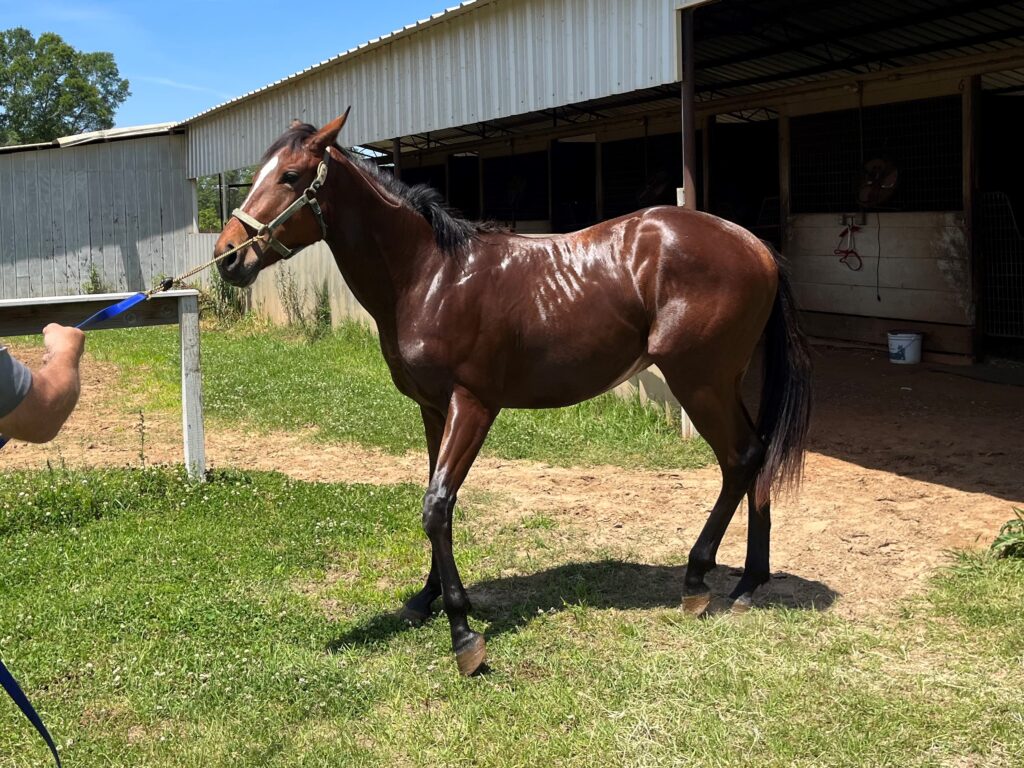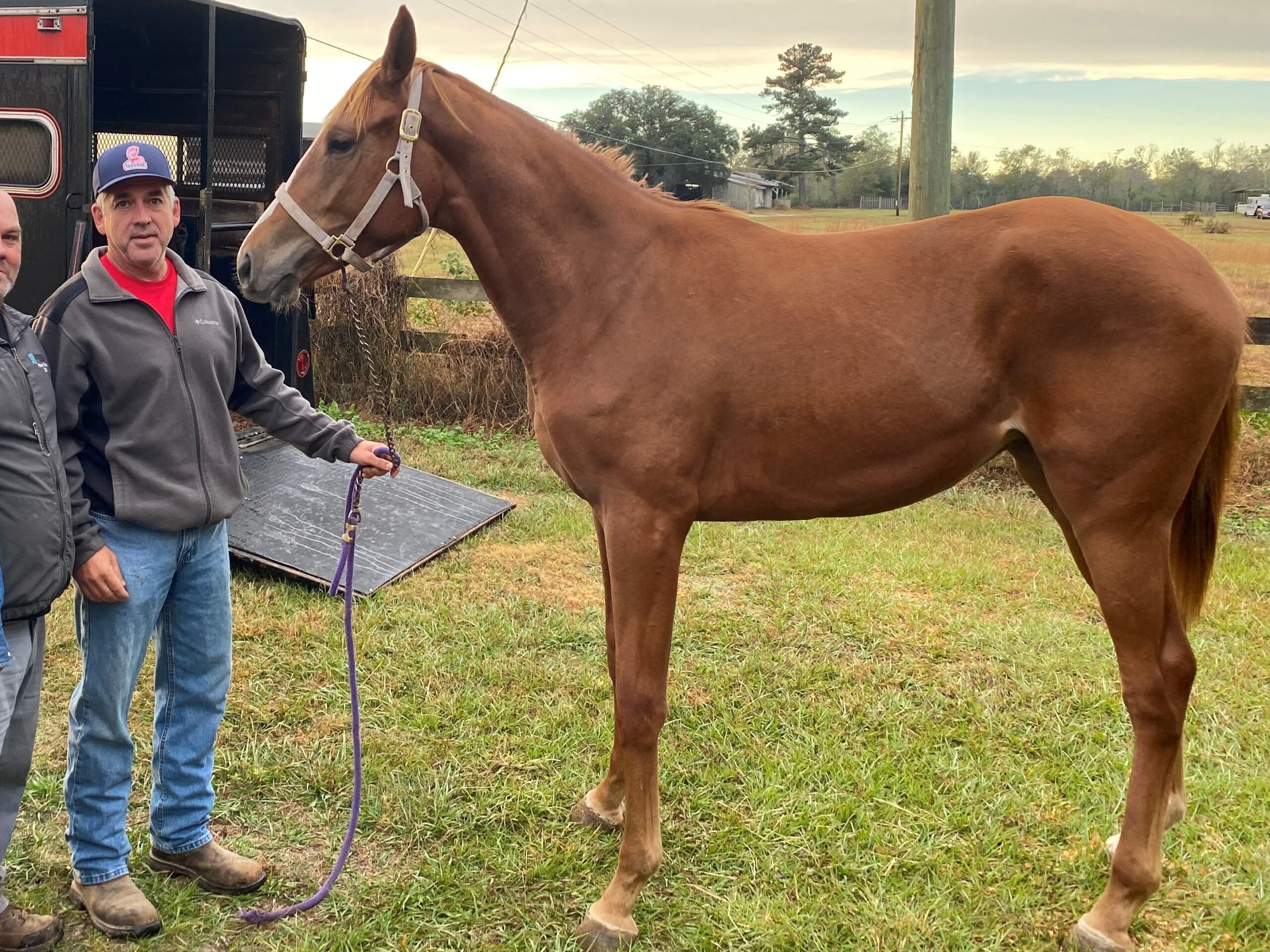Last updated: October 28, 2024
Any links on this page that lead to products on Amazon are affiliate links and I earn a commission if you make a purchase. Thanks in advance – I really appreciate it!
Our friend’s horse came up lame after a race. His trainer thinks it’s an issue with its stifle joint and intends to resume the horse’s training after a few days off. But I’m not convinced you can ride a horse with a stifle problem so soon after the injury.
It would be best not to ride your horse with a confirmed stifle injury. The animal should be given approximately 30 days of stall rest with daily walks. Follow the layoff with light riding for 7 to 10 days, and then have the horse re-examined by an experienced veterinarian.
Stifle joint injuries occur in various degrees and must be managed accordingly. The stifle is a complex joint, and it’s difficult to diagnose accurately, so it’s best to get advice from a vet before riding.

A Stifle Joint Injury Can Prevent You from Riding Your Horse.
You must first identify which area of the stifle was damaged and diagnose the cause before deciding to ride your horse.
The stifle is a hinge joint similar to a human knee, except the human knee is upright, and the stifle is angled. The stifle is located at the upper hind limb of the horse and is the largest joint in the horse’s body. It provides support, flexion, and extension.
The stifle is also an element of the stay apparatus, which allows horses to maintain a weight-bearing for extended periods while relaxing the other hind limb.
The stifle joint has several different ligaments and cartilage discs between the patella, femur, and tibia and two strong ligaments supporting it on both sides.
More ligaments support the stifle from the top and bottom. Diagnosing and treating its injury is difficult because of all the parts involved in the stifle joint.

Even though diagnosing a stifle injury is difficult, knowing the damage’s location and source is key before riding your horse.
Short strides are a sign of lameness in the stifle joint.
A shortened stride can show lameness in the stifle joint; specifically, horses with a stifle injury avoid reaching forward with their injured hind leg.
Often the lameness is more noticeable on the outside leg when the horse is worked on a lunge line. Additionally, the shortness of stride may be more prominent while walking than a jog.
A horse’s stifle can be injured in many ways, including trauma or gradual wear and tear. Some injuries will heal on their own, while others require treatment.
I know of horse owners that give their horses joint supplements. These treatments are gaining popularity, but are they worth the money? I wrote an article all about joint supplements, their benefits, and their shortcomings. You should check it out if you consider giving them to your horse.
Below is a helpful YouTube video that explains the stifle joint and associated problems in performance horses.
Stifle Joint Disorders.
Osteochondrosis
Osteochondrosis is a disease of the stifle that is more common in younger horses and is found across many breeds. The condition can lead to joint effusion and lameness when horses start training.
Osteochondrosis is a failure of the cartilage to develop into the bone in the limbs of a growing animal. It is abnormal cartilage growth in the joint that thickens, softens, or collapses, or it may separate from the bone. The disease is typically diagnosed with x-rays of yearling horses, often before clinical signs are noticed.
Subchondral Bone Cyst
A subchondral bone cyst is a fluid- and scar-tissue-filled cavity just under the cartilage that covers the bone surface at a joint. When in the stifle, these cysts cause lameness and are challenging to treat.
The reasons these cysts develop are not fully understood, but they may develop after trauma to the site. The severity of lameness varies and exhibits suddenly. Lameness may be intermittent, particularly in older horses.
Some horses show mild swelling around the joint, but in most instances, horses show no outward signs. The cysts can be confirmed with X-rays. The lesions can be treated conservatively with rest and steroid injections. If the conservative treatment fails, surgery to remove the cyst contents and lining is an option.
Most horses recover reasonably well from a subchondral cyst; however, the age of the horse factors into the chances of full recovery. Click here to read a study about post-treatment recovery from stifle injuries.

Osteoarthritis (OA)
Osteoarthritis is the degeneration of joint cartilage and the underlying bone. Typical signs of osteoarthritis are heat, swelling, lameness, stiffness, popping, grinding, and crackling sounds and sensations in the joint.
Arthritis can develop early in young athletic horses or older horses. The prognosis for full recovery depends on how soon the disease is detected and the animal’s age. Pain management is paramount.
Treatment
The two most common treatments are non-steroidal anti-inflammatory oral drugs such as Bute or injections of products that contain hyaluronic acid or polysulfated-based medications. Another method to treat OA is corticosteroid joint injections, particularly for equine athletes still competing.
Shockwave therapy has been used to treat horses suffering from OA in their stifles. The studies of shockwave therapy are promising; however, testing is continuing, and hopefully, the treatment will be successful. However, presently, there is no magic bullet to fix osteoarthritis. To read the study on shockwave treatment, click here.
Patellar fractures
Patellar fractures are commonly caused by kicks from other horses or collisions with obstacles, especially when attempting to clear fences in jumping events. These painful injuries often require surgery to remove bone fragments or insert screws to stabilize the joint. Radiographic views are indispensable for a precise diagnosis of the fracture.
Treatment
Minor fractures can heal without surgery but will require time off and stall rest. Depending on the horse and the injury, you can expect three to five months of recovery.
Soft tissue injuries
Stifle lameness typically develops secondary to trauma. The joint is susceptible to damage in most horses competing in equine athletic events. Whereas some horses show apparent signs of lameness, others may not exhibit overt lameness yet have significant performance impairment.
The biggest problem is often getting an accurate diagnosis of the stifle injury. The stifle joint involves soft tissues that connect, support, and surround it, such as cartilage, ligaments, muscles, and membranes. Trauma often damages the soft tissues of the stifle.
Diagnosis and Treatment
Through diagnostic arthroscopy and MRIs, soft tissue tears can be diagnosed. Tears of the meniscal ligaments and cruciate ligament injuries are potentially career-ending, although surgical treatment can be successful in some cases, and horses can resume their careers.
Horses that have sustained substantial tears are difficult to manage successfully. Surgical injections of lesions with bone marrow aspirants combined with rest have been used to treat these, as has shock wave therapy. However, the effectiveness of bone marrow treatment or shock therapy has not been proven to provide benefits.

FAQs
Why is my horse’s stifle clicking?
Many things, including a traumatic event, joint instability, or osteoarthritis, can cause clicks in the stifle (knee). A veterinarian should evaluate your horse if the clicking is accompanied by pain, swelling, or lameness. If the clicking does not cause pain or other symptoms, it may not be anything to worry about.
What is a sticky stifle on a horse?
The stifle joint is stabilized by a ligament, which can sometimes get stuck in a locked position. When this happens, the hind leg can’t be flexed, and the horse has to drag the stiffened limb; this action releases the leg. A sticky and locking stifle is the condition.
Additional information
- If Your Horse has Thrush Can You Still Ride it?
- Can You Ride a Barefoot Horse on the Road? 10 Tips
- Can You Get A DUI Riding A Horse Drunk?
- Is Horseback Riding on Roads Legal in Louisiana?
- To find out what we can learn from a horse’s teeth, click here.
- To read about equine obesity, click here.

About the Author: Miles Henry
Lifelong Horseman | Racehorse Owner | Published Author
Miles Henry brings over 25 years of hands-on experience training and owning Thoroughbred racehorses. Raised with Quarter Horses and Appaloosas, he’s spent a lifetime learning from horses—on the track, in the barn, and in the field. Today, he runs a small but successful racing stable in Louisiana and shares real-world insights on HorseRacingSense.com, helping horse owners, fans, and bettors navigate the sport with confidence.
📚 Books: View Miles’s books on Amazon »
🎧 Podcast Guest: Animal Tales Ep. 32 |
YouTube Interview
📩 Newsletter: Sign up for racing tips and horse care advice »
🔗 Follow Miles:
Twitter |
Facebook |
YouTube


